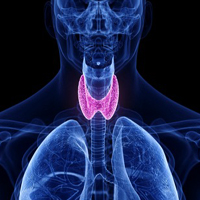Thyroid hormones profile of patients with type 2 diabetes mellitus in Kano, Nigeria

All claims expressed in this article are solely those of the authors and do not necessarily represent those of their affiliated organizations, or those of the publisher, the editors and the reviewers. Any product that may be evaluated in this article or claim that may be made by its manufacturer is not guaranteed or endorsed by the publisher.
Authors
Diabetes mellitus (DM) and thyroid disease are the two most common endocrine disorders in the general population. Several Studies have shown that thyroid dysfunction is common in patients with DM, and thyroid dysfunction have been found to have a considerable impact on the glycaemic control and often increases the risk of development of long-term complications in patients with diabetes mellitus. This study determined the prevalence of thyroid dysfunction in patients with type 2 DM in Kano, North-Western Nigeria. The study was a descriptive cross-sectional study conducted on 250 participants made up of 130 patients with type 2 DM and 120 apparently healthy non-diabetic controls. Questionnaires were used to collect information on bio data, medical history, duration of diagnosis of diabetes and type of treatment. Also, blood samples of the participants were collected and analyzed for fasting plasma glucose, fT3, fT4, and TSH. The results were interpreted using American Thyroid Associations’ criteria and the data was analyzed using the statistical software package, STATA version 20. Two hundred and thirty-four (93.6%) of the participants were euthyroid while sixteen (6.4%) were found to have various forms of thyroid dysfunction. The prevalence of thyroid dysfunction was 10% and 2.5% among type 2 diabetics and controls respectively. Among the type 2 DM patients with thyroid dysfunction, 38.5% had hypothyroidism. Thyroid dysfunction was found to be commoner among type 2 DM patients than non-diabetic individuals with hypothyroidism being the commonest disorder.






